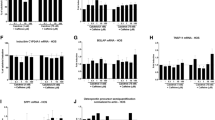Abstract
Vitamin D through its receptor (VDR) plays a major role in bone mineral metabolism. However, VDR is also present in a variety of cell lines as well as in numerous tissues, suggesting other functions of the hormone beyond bone metabolism and mineral homeostasis. At the liver level, it has been shown that vitamin D induces numerous changes (i.e. enzyme activity level, stimulation of some metabolic pathways and stimulation of the normal liver recovery after partial hepatectomy). However, some works did not find VDR in the liver, and also used liver tissue as a negative control of VDR gene expression. In this paper, we examined fetal, neonatal and adult rat tissues for the presence of VDR using a sensitive RT-PCR technique and immunohistochemistry. We found VDR mRNA and VDR protein in rat liver at all different periods of rat life. Thus, we suggest that some of the actions of vitamin D on liver could be mediated at the genomic level through the VDR, and that the use of this tissue as a negative control of VDR gene expression is clearly inappropriate.
Similar content being viewed by others
Author information
Authors and Affiliations
Additional information
Accepted: 7 June 1999
Rights and permissions
About this article
Cite this article
Segura, C., Alonso, M., Fraga, C. et al. Vitamin D receptor ontogenesis in rat liver. Histochemistry 112, 163–167 (1999). https://doi.org/10.1007/s004180050403
Issue Date:
DOI: https://doi.org/10.1007/s004180050403




